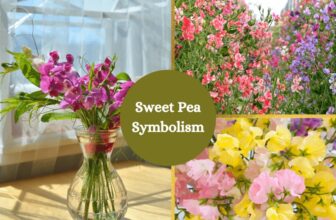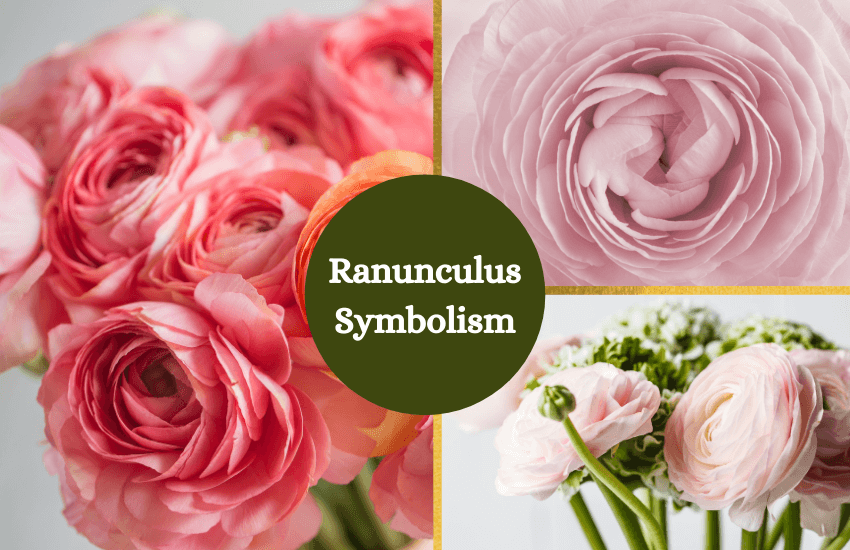
Table of Contents
Known for its romantic flair, ranunculus commonly features huge round blooms with layers of beautifully ruffled petals, making it a bouquet favorite. However, these flowers have numerous kinds and vary in appearance. Let’s find out more about its distinguishable varieties and symbolic meanings.
About the Ranunculus
Commonly referred to as buttercups, Ranunculus is a genus of flowering plants in the Ranunculaceae family. Derived from the Latin terms rana and unculus that translate to little frog, the ranunculus was probably called this because of its tendency to grow along streams plentifully.
Of all the types of ranunculus available, the most sought after is the Persian buttercup. This variety, also called R. asiaticus, is regarded as the florist’s bloom for its ruffled and brilliantly colored petals in lollipop hues like pink, purple, orange, pale yellow, and red. They usually have flappy, globe-like flowers that bloom in the late spring to early summer, and reach up to two feet tall.
The Persian ranunculus is native to central Asia but is now widely grown throughout the world, especially in regions with temperate climates. Since the genus is vast, some of the flowers are perennials, while others are annual or even aquatic. There are different types of ranunculus, with some varieties commonly found in grassy meadows and woodland areas in the United States. Some of them are the R. aconitifolius with saucer-shaped flowers, the R. lyallii with gigantic white flowers and lily pad-like leaves, and the R. acris or double meadow buttercup that tends to be weedy and invasive.
Origin of the Ranunculus
The origin of the ranunculus is connected to an ancient Persian myth. While there are several versions to it, the two most popular are as follows:
According to a Persian myth, a handsome young prince garbed in green and gold clothes fell in love with a beautiful but haughty nymph. He sang songs to her and tried to woo her, but she rejected his advances. He eventually died from a broken heart and a ranunculus grew where he fell. In another version of this myth, the other nymphs got tired of hearing the prince singing to her, that she turned him into a ranunculus.
Meaning and Symbolism of Ranunculus
In general, ranunculus flowers symbolize charm and attractiveness regardless of its color. They’re beautiful and symbolic flowers to give to a loved one or to include in wedding bouquets and floral decorations.
Ranunculus flowers are sweet and romantic, making them the ideal gifts for loved ones. However, different types of ranunculus carry different meanings. If you want to be specific with your message, here are the meanings associated with different types of ranunculus:
- Persian Buttercup (Ranunculus asiaticus) – This is the most popular and most beautiful variety of buttercups. This variety says, “I am dazzled by your charms.” In Victorian times, a bouquet of ranunculus was usually given to someone attractive and charming. This variety of ranunculus is commonly used in floristry to express sweet sentiments and romance.
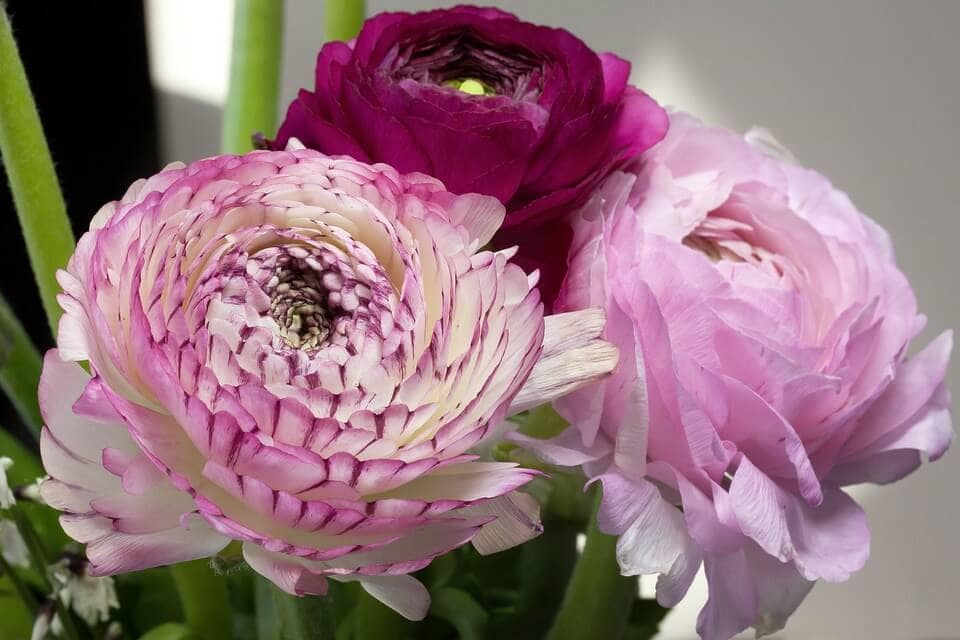
- Meadow Buttercup (Ranunculus acris) – Sometimes referred to as tall buttercup, the flower symbolizes ingratitude, due to its association with manipulative beggars during the medieval times. According to legend, beggars would rub the flower on their skin to cause inflammation, which would stir sympathy in people and make them give money. This variety grows in meadows and grasslands.
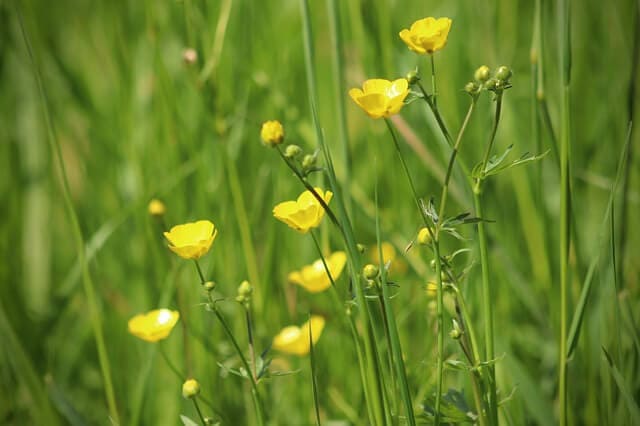
- Celery-leaved Buttercup (Ranunculus sceleratus) – This ranunculus is commonly found growing near ponds, and it also symbolizes ingratitude. In fact, it’s also called the cursed buttercup, biting crowfoot, and blisterwort. Its leaves resemble those of the celery plant, hence the name.
- Hairy Buttercup (Ranunculus sardous) – This flower is associated with superstition citing that it can create madness or craziness. This has given it the symbolism of irony, scornful laughter, and even death.
Uses of Ranunculus Flower throughout History
For centuries, ranunculus has been used in traditional medicine and even in divination.
In Magic and Superstitions
During ancient times, the ranunculus was used in divination to deepen spiritual connection and teach wisdom. Some even think that it’s guarded by a spirit, especially the Ranunculus bulbosus, that would help in manifesting dreams and desires. Also, the flower served as an amulet and many hung them at their front doors.
In Medicine
Disclaimer
During medieval times, the ranunculus, including the flower, leaves, and roots, were used to help with blisters. In fact, Pliny the Elder recommended it for treating leprous sores. In folk medicine, these blooms were also used as a remedy for swelling of the lymph glands, known as the king’s evil in Europe.
Nowadays, the whole plant, specifically the Ranunculus bulbosus, is used to make medicine for treating flu, hiccups, arthritis, rheumatic pain, and other diseases.
The Ranunculus Flower in Use Today
These show-stopping flowers make a spectacular display in gardens, flower borders, and vases. What’s more, ranunculus can even stay fresh up to a week after being cut. A bouquet of these blooms can warm up any interior with its color and beauty.
Ranunculus is best known for its delicate petals and cotton candy colors, making it the highlight of bridal bouquets, centerpieces, and corsages during spring and winter weddings. While these blooms are typically chosen used to complement vintage-themed weddings, they suit any wedding theme and even serve as wedding cake toppers.
When to Give Ranunculus Flowers
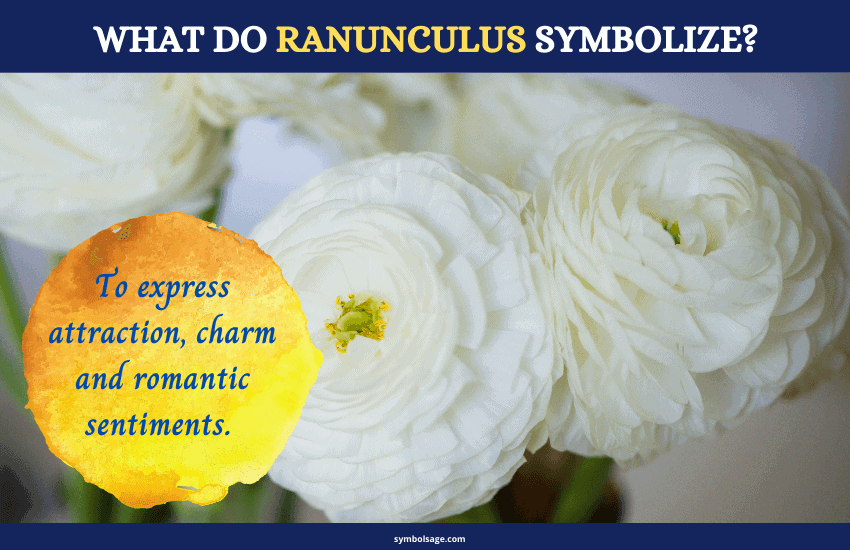
Ranunculus symbolizes charm, so it’s the perfect bouquet to give to someone who has charmed you, as if you’re saying, “I have a crush on you” or “I find you attractive.” For a more romantic gesture, think of Tango ranunculus, which is a great alternative to red roses.
Because it isn’t a birth flower, the ranunculus makes a perfect gift at any time of the year, including birthdays, anniversaries, holidays, special occasions, and other celebrations.
In Brief
If you like to add more color to your spring garden, think of these blooms! Ranunculus has been a symbol of charm and attractiveness for centuries, and it continues to capture our hearts with its color and beauty.





